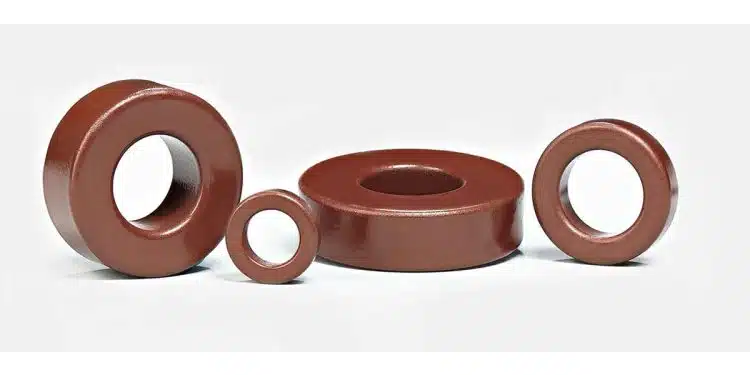Magnetics, a global supplier of soft magnetic components and materials to the electronics industry, is proud to announce the release of new magnetic powder cores.
Magnetics XFlux Ultra inductor magnetic powder cores offer the same great DC Bias and high saturation found in standard silicon-iron XFlux while providing a 20% improvement in core loss.
Applications include high efficiency uninterruptible power supplies (UPS), high power SMPS, and power factor correction (PFC) for on-board chargers (OBC). This new product expands on Magnetics’ current offerings, including various powder cores, ferrite cores, nanocrystalline cores, amorphous cut cores, tape cores, and bobbin cores.
“Our customers come to us for the highest quality products available, and this new material ensures that our soft magnetic cores continue to exceed their expectations,” said Grace Anewalt, Magnetics’ spokesperson. “We invest heavily in research and development to improve the efficiency of our products, and we are proud of the results that we have achieved with our newest products, including XFlux Ultra, High DC Bias XFlux, High DC Bias Edge, and others.”
With this new product, Magnetics has enhanced its lineup to offer greater versatility, reliability, and performance, while adhering to stringent global standards including ROHS, REACH, IATF 16949:2016, ISO 9001:2015, and more. Magnetics’ distributed air gap powder cores, primarily used in power inductor applications, are optimized to provide high resistivity, low hysteresis and eddy current losses, and excellent inductance stability under both AC and DC conditions.
Meanwhile, Magnetics’ manganese zinc ferrite cores have low coercivity, low losses at high frequencies, high permeability, and good temperature properties. They are extensively used in switched-mode power supplies (SMPS) and radio frequency (RF) transformers and inductors. Lastly, Magnetics strip wound cores are made from thin strips of high permeability nickel-iron alloys and are key components of complicated electronic circuitry found in high reliability applications including military, aerospace, downhole drilling, and nuclear reactors.
In addition to engineering enhancements, Magnetics has also implemented improvements to its manufacturing processes to enable the production of more consistent and reliable products. These enhancements will allow Magnetics to maintain its position as a provider of the highest-quality products on the market that meet the stringent electrical, dimensional, and visual standards required by their customers.
“We are committed to providing the highest quality products available today, and these enhancements are just one example of our dedication to delivering the most reliable and high-performing products for our customers,” added Anewalt.
As the world continues to demand more energy-efficient and technologically advanced products, Magnetics’ enhanced magnetic cores will play an ever-more-important role in enabling innovation across a wide range of industries.































